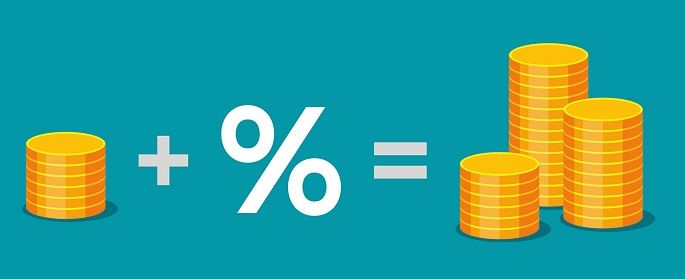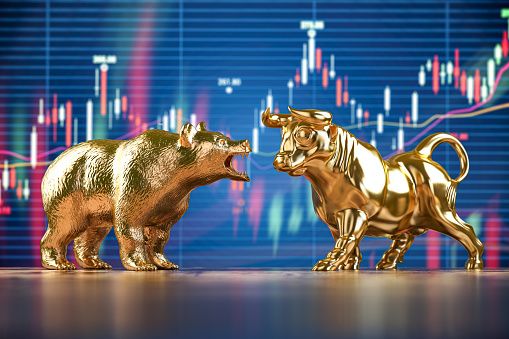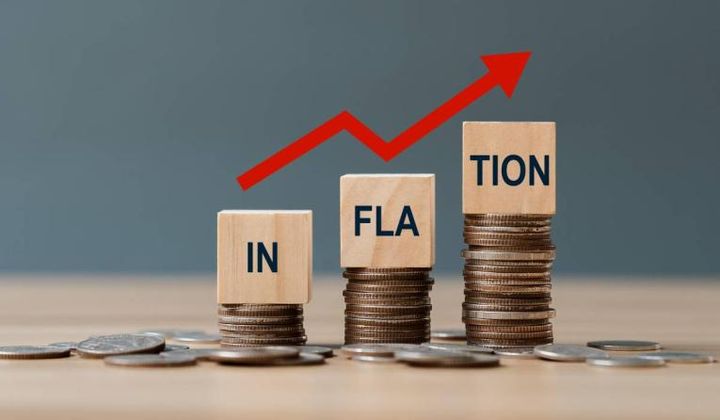Interest rates: How debt shapes the modern world. +Calculate your mortgage payments.

There are two sides on every coin, as there are two sides on every borrowing. The thing that moves the lender to give his/her money to someone else is the return he/she expects to receive added to his starting principal after a period of time. This added money is called interest (or Cost of Borrowing) and without it the modern economies would suffer slow economic growth.
A very common misconception that is found in many big websites and is stated in many famous economic tv shows is that interest rates exist both in borrowing and in saving. The fact that banks around the globe pay an interest rate to depositors is true, but (as it was stated in my previous article: "Bank crisis: is my money safe in the bank?"), this happens not for the sake of money protection, but for the banks to take and manage this amount of money to make a profit. To express it in other words, banks take depositors money in order to furtherly lend these amounts to borrowers. As a result, banks make profit out of the differences that exist between the interest rates given to depositors and taken from the borrowers. And this is exactly the main usage of banks, promoting economic growth and lending money to potential successful business initiatives and not protecting people's money. That's the reason why fixed deposit accounts come with greater interest rates than simple savings accounts.

Types of interest rates.
Common occasions of borrowing/lending that include interest rates are: mortgages, credit cards, personal loans, business loans, overdrafts, car finance, equipment leasing, student loans, bonds. Everyone of them has different interest rates and usually the riskier the loan type the higher the cost of borrowing. For example, according to lendingtree the average interest rate of credit cards in USA as of April 2023 is 23.84% , while for mortgage interest rates are between 6%-7%.
Interest rates are closely bonded to time. Most frequently when we talk about interest rates we refer to annual periods, but they also apply to daily, weekly or monthly time frames. That's the reason why interest rates play an important role in the perception of Time Value of Money, as inflation does. Time Value of Money is the theory that suggests that the same amount of money has more value today than in the future.By knowing the interest rate (i), the time periods (n) and one of Present Value (PV) or Future Value (FV) we can calculate the other and vice versa.
- Simple interest is the most basic type of interest rate. It is also called regular or nominal interest and is calculated simply by finding the % that is added to the starting principal. For example, if you lend me 100$ and expect me to give you 120$ in two years there is a 10% interest rate.
- Compound interest rate takes into account the overall amount, including interest payments of previous periods, thus also called interest on interests. For example if you lend me 100$ and expect me to pay you a 10% in compound interest annually, in Year 2 I would have given you 100*10%+(100+100*10%)*10%+100 (starting principal) = 10 (Year 1) + 11 (Year 2) + 100 (starting principal) = 121. As it is shown compound interest returns greater amounts of money and that gets even greater in longer periods of time. That's the reason why ,according to the legend, Einstein once said: "Compound interest is the 8th wonder of the world. He who understands it earns it, he who doesn't pays it".
- Fixed interest rates are the ones that remain the same for the whole period of the loan payments. This means that the agreed rate will not change in the future despite changes in the economic environment. Such rates are most frequently used on mortgage and student loans.
- Variable interest rates are the opposite of fixed interest rates, thus they can get increased or decreased based on some variables. In most cases the variable on which variable interest rates depend is the Bank Interest (further on that below).
- Bank interest is the most significant of all interest rates in economies, because it is set by the Central Banks of the countries and affects the cost of borrowing in the economy. This happens because private banks interact with the Central Bank in order to manage the amount of money in circulation. In result private banks also increase or decrease their interest rates accordingly. When there are conversations about interest rates increases or decreases in the news from the Federal Reserve Board (Fed) or the European Central Bank (ECB), they mean the Bank Interest.
Influencing factors and Monetary Policy.
As it was stated before interest rates can vary between time periods and different loan types. But there are some factors that usually cause these changes and frequently these are:
- Monetary Policy: is the managing of money supply in the economy ,and as it was stated before, it is achieved by changes in the Bank interest rates set by Central Banks. Although central banks are an autonomous authority they work together with governments in order to meet their goals.
- Collaterals: are the assets that a borrower promises to give to the lender if he won't be able to meet his borrowing obligations. The value and the amount of the collaterals play a significant role in determining the risk for the lender. Collaterals can also include the assets that are bought with the money of the loan. For example, usually mortgage loans have as collateral the house that is bought with the borrowing money.
- Loan's currency: may affect the height of the interest rate especially in cases where highly unstable currencies are used for borrowing transactions. High inflationary currencies cause the devaluation of the interest payments paid by the borrower, so the lender usually puts options that change the interest rate on the starting principal to protect his funds.
- Demand and Supply: describe the current trends of the market. Higher interest rates decrease the demand in the market as the cost of borrowing increases, while lower interest rates promote money circulation and increase demand. The same is true the other way round for the supply in the market.
- Default Probability: is another measure that lenders use to assess risk and determine the wanted return through higher interest rates. This is a common ground for government bonds issued by unstable economies. For example US treasury bonds are considered a very safe investment (AA+ rating by Standard and Poor's) in comparison with Congo's high risk government bonds (CCC+ rating by Standard and Poor's). Bonds that rank lower than the Ba-B (Moody's) or BB-B (Standard and Poor's) ratings are considered junk bonds due to their high risk attached to the bond.
Apart from the aforementioned, influencing factors to interest rates are also the term to maturity of the loan, special features like call provisions, reserve requirements, compensating balance etc.
In addition something that should be mentioned separately is the effects of Monetary Policies to interest rates and inflation. Bank interest rates or just interest rates that are set by the Central Bank (f.e. Fed, ECB) directly affect the inflation rate. When inflation is ramping governments and central banks follow contractionary monetary policies (increasing interest rates) in order to slow down economic activity and along with it inflation rates. On the other hand, when inflation is very low competent authorities can take advantage of expansionary monetary policies (decreasing interest rates) to decrease the cost of borrowing and boost economic growth.
Effective Interest Rate, Annual Percentage Rate, Coupon Rate.
The effective interest rate (EIR) or annual equivalent rate (AER) or annual percentage yield (APY) are the measurements of the real percentage return for the investor/lender including the compounding effects. These rates help investors/lenders to compare the interest rate for investments/loans that include different interest payments periods (compounding).
Effective Interest Rate (r) Formula: r= ((1+i/n)^n) - 1
i: nominal interest rate, n: number of compounding periods
The annual percentage rate (APR) is the measurement that shows the cost of borrowing to the borrower including the compounding effects. In addition to APR there is the effective APR (EAPR) ,which also takes into calculation the borrowing fees.
Annual Percentage Rate (APR) Formula:
APR= [((fees+interest)/principal)/n]*365*100%
n: number of days in loan term
Coupon rate is related to bonds and refers to the interest payments, as a percentage, that the bondholder receives during the issuing-maturity period.
Coupon Rate (CP) Formula:
CP= (Annual Interest Payments/Par Value of the Bond)*100%
*par value = face value = nominal value

Mortgage Calculation Formula.

Buying a home on mortgage can bring a mixture of feelings. On the one hand excitement and happiness for a brand new start but on the other hand anxiety and worries. It is very important for individuals who make the move to buy a house while borrowing money from the bank to assess the risk and their financial position in order to avoid economic hardships in the future.
Calculating the mortgage payments and comparing them with the income and available deposits is a good start for a person to evaluate the risks and furtherly move on taking a housing loan.
Of course there are dozens of online mortgage calculators available (even for free) on the internet, but I think it is important for the borrower to understand how these calculators work and what variables they take into consideration. For this exact reason the following mortgage payment formula is presented:
M = (P - DP)*[ i(1 + i)^n ] / [ (1 + i)^n – 1]
M: total monthly payments, P: whole loan amount, DP: downpayment, I: monthly interest rate, n: total amount of months of mortgage payments
*In case there are no downpayments DP = 0
** If the interest rate is given on an annual basis, it should be divided by 12 to express a monthly interest rate, I(monthly) = I (annually)/12




Comments ()